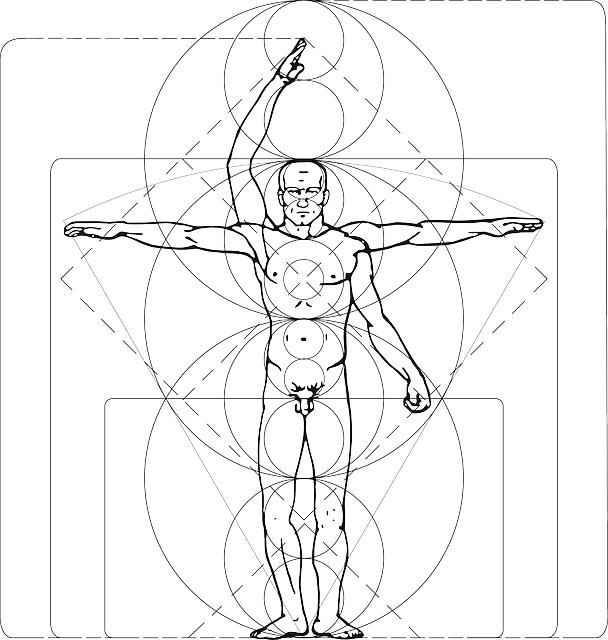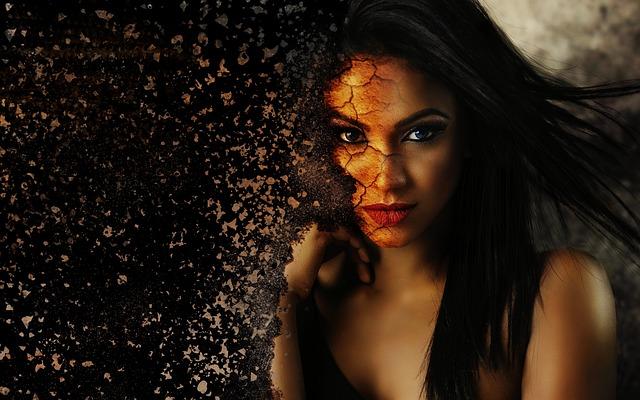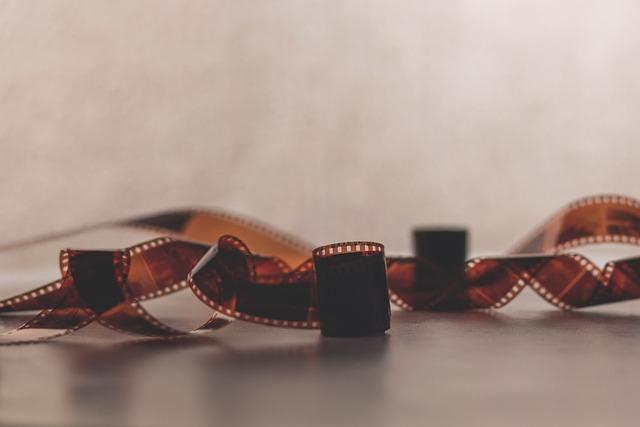Welcome to the colorful world of DaVinci Resolve 19, where creativity knows no bounds and every hue has a story to tell. In this article, we will unravel the secrets of mastering color grading, diving deep into the mesmerizing realm of DaVinci Resolve 19 tutorial insights. Get ready to embark on a journey where shades and tones blend harmoniously to paint a picture that captivates the eye and stirs the soul. Whether you’re a seasoned pro or a novice explorer, join us as we unlock the power of color manipulation and unleash the true potential of your cinematic creations. It’s time to elevate your storytelling to new heights through the magic of color grading in DaVinci Resolve 19.
Heading 1: Understanding the Impact of Lighting on Color Grading Techniques
Understanding the Impact of Lighting on Color Grading Techniques is crucial in achieving the desired look in your projects. Lighting plays a significant role in shaping the overall aesthetic of your footage. In the DaVinci Resolve 19 tutorial insights shared, it is highlighted how crucial it is to analyze the lighting before diving into color grading. The video emphasizes that 50% or even more of what makes a look appealing is the lighting itself, not just the color grading applied. A simple example presented is a sneaker commercial where the initial idea was to incorporate a red light in the background. However, upon experimentation, it was discovered that removing the red light resulted in a much better look for the footage. This showcases how a simple change in lighting can drastically alter the final outcome.
When delving into the color grading process, it was demonstrated that even with minimal colors present in the footage, the impact of lighting adjustments cannot be understated. The tutorial revealed a step-by-step process using DaVinci Resolve tools to transform the footage from its original state to a futuristic, gritty sci-fi look. By making precise adjustments in contrast, color temperature, and hues using color wheels and nodes, the desired aesthetic was achieved efficiently. Additionally, the tutorial introduced the color slice tool in DaVinci Resolve 19, which allows for targeted color adjustments, enhancing specific tones like red in the footage. The incorporation of effects such as halation and film grain in the final touches further exemplifies how small details can elevate the overall visual appeal of the color grading, showing the intricate balance between lighting and post-processing techniques.
Heading 2: Leveraging Simple Color Adjustments in DaVinci Resolve 19 for Effective Grading
In DaVinci Resolve 19, mastering color grading is made easy with simple color adjustments that can elevate the overall look of your footage. It’s essential to understand that lighting plays a crucial role in achieving a desired look before diving into color grading. As demonstrated in a sneaker commercial example, subtle changes in lighting can drastically impact the final outcome of the color grade. For instance, removing a red light in the background instantly transformed the footage, showcasing the significance of lighting in the grading process. Analyzing and manipulating lighting before applying color adjustments can lead to more cohesive and visually appealing results.
Transitioning to the color page in DaVinci Resolve 19, the tutorial highlights the straightforward process of color grading, especially when dealing with minimal colors and skin tones. By utilizing tools like color space transform and color wheels, users can effortlessly adjust contrast, temperature, and color tones to achieve the desired look. Additionally, incorporating effects like the prism effect can add a unique touch to the overall grade, enhancing the visual appeal. The tutorial also introduces the color slice tool, allowing for precise color adjustments, making colors more vibrant and saturated. While these techniques work seamlessly for footage with limited colors, adjustments may be necessary when working with footage containing people and varied skin tones to ensure a balanced and natural look.
Heading 3: Enhancing Color Consistency and Vibrancy with Color Slice Tool in DaVinci Resolve 19
Sure, here is the content for the “Enhancing Color Consistency and Vibrancy with Color Slice Tool in DaVinci Resolve 19” section of the “” article:
In the process of color grading a sneaker commercial using DaVinci Resolve 19, it becomes evident that analyzing lighting is paramount before delving into color grading techniques. The lighting plays a pivotal role in shaping the overall look and feel of the footage, with color grading serving to enhance the existing lighting effects. By tweaking the lighting setup, such as removing a red light source, the entire color grading outcome can be transformed significantly. This emphasizes the importance of understanding how lighting influences the final color grade and how alterations in lighting can lead to diverse visual effects.
Moving onto the actual color grading process, simplicity reigns supreme when working with footage that is predominantly monochromatic. The step-by-step breakdown of adjusting color profiles, contrast, temperature, and specific color channels highlights how subtle changes can make a substantial difference in the overall appearance of the footage. Utilizing tools like the color wheels and log wheels, alongside effects like the prism effect, brings about a cohesive and polished look to the color grade. Moreover, the Color Slice Tool in DaVinci Resolve 19 emerges as a powerful asset for fine-tuning specific colors, enhancing vibrancy, and ensuring color consistency across the footage without compromising the visual integrity. By delicately adjusting hues, saturation, and density, the Color Slice Tool allows for precise color enhancements that elevate the visual appeal of the final product.
Heading 4: Elevating Visual Appeal with Halation Effect and Film Grain in DaVinci Resolve Studio
In color grading, the halation effect and film grain can significantly elevate the visual appeal of your footage in DaVinci Resolve Studio. The halation effect creates a soft glow around bright areas, adding a dreamy and artistic touch to your images. Meanwhile, film grain can mimic the texture of traditional film, giving your video a classic and nostalgic feel. These tools, although optional, can add depth and character to your color grading process, allowing you to achieve a unique and professional look for your projects.
When analyzing a color grade that you admire, remember that lighting plays a crucial role in defining the overall look of the footage. The lighting setup can make or break a color grade, as even subtle changes in lighting can drastically alter the final result. For example, in a sneaker commercial color grading project, adjusting the lighting by removing a red light significantly improved the visual impact of the footage. By understanding the importance of lighting and incorporating effects like halation and film grain strategically, you can master the art of color grading and enhance the visual storytelling in your videos.
Q&A
Q: Why is it important to analyze lighting before color grading in Davinci Resolve?
A: Analyzing lighting before color grading is crucial because lighting plays a significant role in determining the final look of the footage. In the video tutorial, the creator emphasizes that 50% or even more of what makes a look appealing is attributed to lighting, not just color grading. The example provided with a red light in the background illustrates how a simple lighting adjustment can significantly impact the overall aesthetic of the footage. Therefore, understanding and manipulating lighting conditions before color grading is essential to achieve the desired visual outcome.
Q: How was the tutorial’s color grading process simplified in Davinci Resolve for a sneaker commercial?
A: The color grading process in Davinci Resolve for the sneaker commercial was simplified due to the footage’s limited color palette—a near black-and-white image with minimal complex colors like skin tones. The creator used a color space transform to set the footage to Slog 3 profile and then applied simple color adjustments to pull the image towards a futuristic, gritty sci-fi look. By manipulating contrast, temperature, and color wheels, the creator quickly achieved the desired blue-toned aesthetic. The use of log wheels allowed for specific adjustments, such as making the shoe warmer in tone.
Q: What additional effects were applied to enhance the color grade in Davinci Resolve?
A: In addition to basic color adjustments, the creator included subtle yet impactful effects to enhance the color grading of the footage. One such effect was the prism effect applied using separate nodes for each color channel—red, green, and blue. By selectively zooming the red channel, the creator created cyan and red edges, contributing to a gritty retro look and enhancing the overall vibe of the image. Furthermore, the color slice tool in Davinci Resolve 19 was utilized to precisely adjust the hue, saturation, and density of specific colors, such as the red tones in the footage, ensuring consistency and vibrancy throughout the color grade.
Q: How can Davinci Resolve Studio further elevate the color grading process?
A: Davinci Resolve Studio offers advanced features that can further elevate the color grading process, as mentioned in the tutorial. For instance, the halation effect and film grain, exclusively available in Davinci Resolve Studio, can add subtle yet impactful enhancements to specific elements in the footage, such as giving the reds and smoke a luminous glow and providing a cinematic textural quality with film grain. These additional effects serve as the final touches to refine the color grade and enhance the visual appeal of the footage, demonstrating the versatility and creative potential of Davinci Resolve Studio for professional color grading projects.
Closing Remarks
mastering color grading in DaVinci Resolve 19 is an essential skill that can truly elevate the look and feel of your videos. As demonstrated in the tutorial, the process may seem daunting at first, but with practice and attention to detail, you can achieve impressive results. Remember, lighting plays a crucial role in creating a visually appealing final product. Analyzing and adjusting the lighting before diving into color grading can make a significant difference in the outcome.
The tutorial highlighted the importance of understanding the impact of different color adjustments on the overall image. By making subtle yet deliberate changes in color temperature, contrast, and hue, you can transform the look of your footage. Additionally, utilizing tools like color wheels and color slice in DaVinci Resolve 19 can help you fine-tune specific colors and create a cohesive and vibrant final look.
It’s important to note that while the tutorial focused on a particular style of color grading suited for a specific type of footage, the principles discussed can be applied and adapted to various projects. Experimenting with different techniques and effects can help you develop your unique style and enhance the visual storytelling in your videos.
We hope that this tutorial has provided valuable insights and inspiration for your color grading journey. Remember, practice makes perfect, so don’t be afraid to experiment and push your creative boundaries. Thank you for tuning in, and we look forward to seeing the amazing color grades you will create. See you in the next tutorial!
